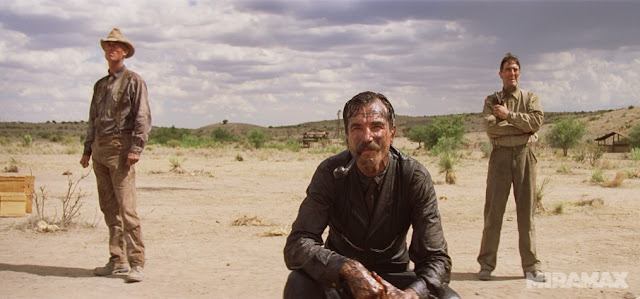With the beginning of Fall term, "Suiting up" usually refers to those lucky individuals who are on cushiony scholarships to play a game. This brief aside will not be about that. This short entry will entail the suit.
Now that the weather has cooled off enough to wear a suit, I am back into mine on a daily basis. Funny thing about it cooling off enough to wear a suit, when I have photos of desert field work being done in a suit. There are stories of Raymond Dart wrapping fossils in his jacket and waistcoat in the field to bring them back home.
Most modern experiences with suits go something like this: You are dragged to the mall (if you have one) or some other department store as a child in order to purchase an ill fitting suit of clothes for Easter or fancy dress occasion, deaths, weddings, etc. The thing fits in exactly no places and you hold your breath for a week hoping you don't grow enough that the trousers leave you looking like Jethro Clampett. You probably only wear the suit that one time, you avoid eating or drinking while wearing the suit and generally take all care in the world not to treat it as normal clothing lest it lose its "suitiness." Unless of course you are under the age of about 8 and then all bets are off and you have your coat off rolling around on the ground wrestling with some other ringbearer or honorary pallbearer over the little redhaired girl from your class.
Fast forward to owning a real suit. Well, not that far. Your next suit is probably not much better. Usually it will come from the same department store, and more often than not, from the same elderly clothing attendant that smells of old spice and death. You will get the one that closest resembles your body type, and are off looking like either like an overstuffed bag of lettuce, or a standard circus/revival tent following an elephant/choir stampede. The most thought you give to tailoring is getting the legs hemmed, IF they were not already prehemmed to some existing length that, at least within the world of Dillard's can vary anywhere from 1 to 2 inches up to different colored trouser legs.
Suits are made for more than walking around in. Find a style you like, find a men's clothing store, go in, get measured, and fitted and get a decent suit. Be prepared to upsize your trousers. Just like women's clothing, jean's have fake sizing to make you feel better about yourself, this is called "vanity sizing" (Really, look it up.) If you wear a 34 inch waist in Levi's or Tommy or whatever it is you wear, you will not, I repeat NOT be squeezing yourself into a 34 inch trouser. Be honest with yourself, sizes are number and they vary, get something that will fit no matter what the tag says or what you think you wear, or what you wear in jeans or t-shirts. Holding on to that "I wear this size" mentality in a Men's clothing store will end up with you looking something like this...
There are alternatives, with suits you still get what you pay for. I will harken back to the field work example. Once upon a time suits were the norm, and they took a beating. Everyday wear that was used. Even today some suit pedants will tell you, don't unsew the pockets it will cause your jacket to lose shape, or carrying a bag strap on your should will wrinkle your lapel. If you don't buy something to use it, why buy it in the first place. (Show pickups are just one example). I cycle to work, I roll my jacket up and stick it in my saddle bag, it doesn't get wrinkled or ruined in the time it takes me to get to work, and here is a secret, if a suit fits well, even if it is wrinkled (modestly) the wrinkles will fall out within about 5 minutes of wear. I also have stuff in the pockets inside and out, even have a pocket square (that breast pocket is a real pocket too, I even carry my sunglasses in it).
 Once you get suit that actually fits you and not a store mannequin, you will never look at clothing the same way again. They should quickly become your favorite clothes, and why wouldn't they? They are tailored for you. Do things in them, if a suit is restrictive get rid of it and get another one, if it looks like you are wearing your dads, you might be able to get away with a tailoring, but probably best to start over. I have gotten the "You bike to work, in your suit?" A couple times already. Asked for the genuine concern from their mother's incessant "you'll ruin your suits" mantra. So with Fall coming on take the time to get some real threads and don't be afraid to suit up, you'll be glad you did.
Once you get suit that actually fits you and not a store mannequin, you will never look at clothing the same way again. They should quickly become your favorite clothes, and why wouldn't they? They are tailored for you. Do things in them, if a suit is restrictive get rid of it and get another one, if it looks like you are wearing your dads, you might be able to get away with a tailoring, but probably best to start over. I have gotten the "You bike to work, in your suit?" A couple times already. Asked for the genuine concern from their mother's incessant "you'll ruin your suits" mantra. So with Fall coming on take the time to get some real threads and don't be afraid to suit up, you'll be glad you did.






























skarV1.jpg)





















